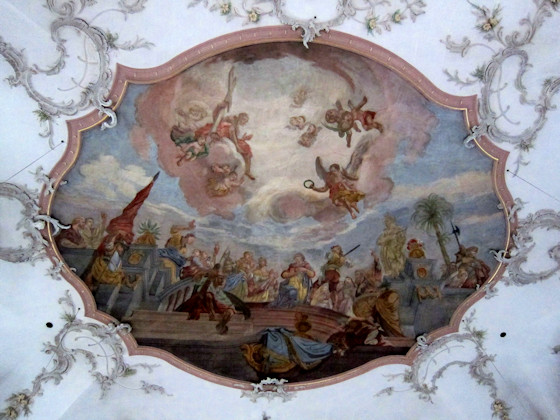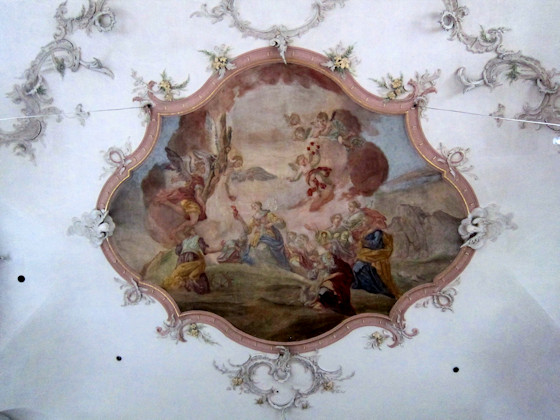The history of the Church of St. Fiden in St. Gallen is closely connected with Ulrich von Eppenstein. He came from a ducal family from Carinthia that was loyal to the king. He was a brother of Duke Liutold of Carinthia. In the investiture dispute that broke out, he remained loyal to King Henry IV in agreement with the convent. In gratitude, Ulrich von Eppenstein was appointed Abbot of St. Gall by King Henry IV in 1077.
He had several castles built to secure the abbey and its territory. With his political opponents - Abbot Ekkart of Reichenau, who was also Bishop of Constance for a time, Duke Welf IV of Bavaria, Margrave Berchtold II of Zähringen as well as the Kyburgs, Nellenburgs (Abbot Ekkart belonged to the Nellenburg family of counts) and the Toggenburgs - he was embroiled in decades of warfare.
In the 1070s, he had parts of the relics of St. Fides brought from Conques Abbey to St. Gall and founded the Church of St. Fides. Relics were very important for the significance of a church in the Middle Ages. In St. Gall, situated on the Way of St. James, St. Fides, who was popular at the time, had become well known.
Ulrich von Eppenstein was also appointed royal counter-abbot of Reichenau Monastery in 1079.
After his elevation to Patriarch of Aquileja in 1086, he stayed there primarily. As such, he is associated with the foundation of the Abbey of San Gallo in Moggio (Moosach) in Friuli. He died on 13.12.1121.
Nothing remains of the early Gothic predecessor church. Today, the church of St. Fiden presents itself in baroque style with classicist corrections. The baroque church was built in 1777 by Johann Ferdinand Beer.

The baroque high altar with the figure of St. Fides (St. Faith) - 2nd from left.

Saitn Faith

Interior view
The ceiling frescos show the martyrdom of St. Faith on the grate, her beheading and the Assumption into heaven.
Potos G. Eichinger, Oktober 2016


